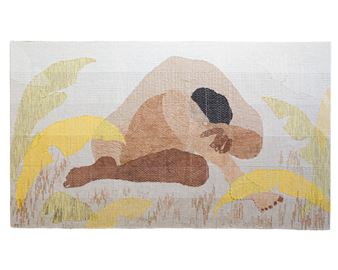Silence
Silence is a powerful force. It can produce profound emotions or conjure startling sensory experiences, and it seems inextricably linked to the passage of time. A prerequisite for contemplative thought, silence has become a scarce commodity in today’s media-saturated world. The exhibition and catalogue project Silence considers this important and little-examined subject in modern and contemporary art. Ranging from uncanny to incantatory to experiential, its broad range of works are not all without sound, but all reflect
the many ways artists invoke silence to shape space and consciousness.
Organized by The Menil Collection and the Berkeley Art Museum and Pacific Film Archive, Silence features paintings and sculptures from the Menil’s permanent collection as well as works by an international group of artists. Additionally, it includes a film and video series on the subject under development by curators at the Pacific Film Archive. Artists featured in Silence include Joseph Beuys, Marcel Broodthaers, John Cage, Marcel Duchamp, David Hammons, Tehching Hsieh, Jennie C. Jones, Jacob Kirkegaard, René Magritte, Mark Manders, Christian Marclay, Robert Morris, Bruce Nauman, Max Neuhaus, Robert Rauschenberg, Doris Salcedo, Tino Sehgal, and others.
An original score for 4’33” (1952) by John Cage will be a central element of the exhibition. This three-part composition for the piano first performed by David Tudor contains no actual playing or music. Instead, it calls attention to the ambient sounds surrounding the audience and corroborates Cage’s famous assertion that there is no such thing as silence. Also featured is White Painting (1951) by Robert Rauschenberg, a flat white canvas from a series that Cage cited as a prime inspiration for 4’33” and called “airports for the lights, shadows and particles.”
The works in Silence explore spiritual, existential, and political aspects of the absence of noise or speech. Among the approximately 32 paintings, sculptures, performances, and sound and video works in the exhibition are the icon of Minimal and Conceptual Art Box With the Sound of Its Own Making (1961) by Robert Morris, a small wooden cube containing a three-and-one-half-hour audio recording of its fabrication; a neon work of 1981–82, Violence Violins Silence, by Bruce Nauman that flashes the words of its title; and documentation of One Year Performance (1978–79) by Tehching Hsieh, in which the artist spent a year in a cage with out speaking, reading, writing, or listening to radio or TV.
Silence is a powerful force. It can produce profound emotions or conjure startling sensory experiences, and it seems inextricably linked to the passage of time. A prerequisite for contemplative thought, silence has become a scarce commodity in today’s media-saturated world. The exhibition and catalogue project Silence considers this important and little-examined subject in modern and contemporary art. Ranging from uncanny to incantatory to experiential, its broad range of works are not all without sound, but all reflect
the many ways artists invoke silence to shape space and consciousness.
Organized by The Menil Collection and the Berkeley Art Museum and Pacific Film Archive, Silence features paintings and sculptures from the Menil’s permanent collection as well as works by an international group of artists. Additionally, it includes a film and video series on the subject under development by curators at the Pacific Film Archive. Artists featured in Silence include Joseph Beuys, Marcel Broodthaers, John Cage, Marcel Duchamp, David Hammons, Tehching Hsieh, Jennie C. Jones, Jacob Kirkegaard, René Magritte, Mark Manders, Christian Marclay, Robert Morris, Bruce Nauman, Max Neuhaus, Robert Rauschenberg, Doris Salcedo, Tino Sehgal, and others.
An original score for 4’33” (1952) by John Cage will be a central element of the exhibition. This three-part composition for the piano first performed by David Tudor contains no actual playing or music. Instead, it calls attention to the ambient sounds surrounding the audience and corroborates Cage’s famous assertion that there is no such thing as silence. Also featured is White Painting (1951) by Robert Rauschenberg, a flat white canvas from a series that Cage cited as a prime inspiration for 4’33” and called “airports for the lights, shadows and particles.”
The works in Silence explore spiritual, existential, and political aspects of the absence of noise or speech. Among the approximately 32 paintings, sculptures, performances, and sound and video works in the exhibition are the icon of Minimal and Conceptual Art Box With the Sound of Its Own Making (1961) by Robert Morris, a small wooden cube containing a three-and-one-half-hour audio recording of its fabrication; a neon work of 1981–82, Violence Violins Silence, by Bruce Nauman that flashes the words of its title; and documentation of One Year Performance (1978–79) by Tehching Hsieh, in which the artist spent a year in a cage with out speaking, reading, writing, or listening to radio or TV.
Contact details










